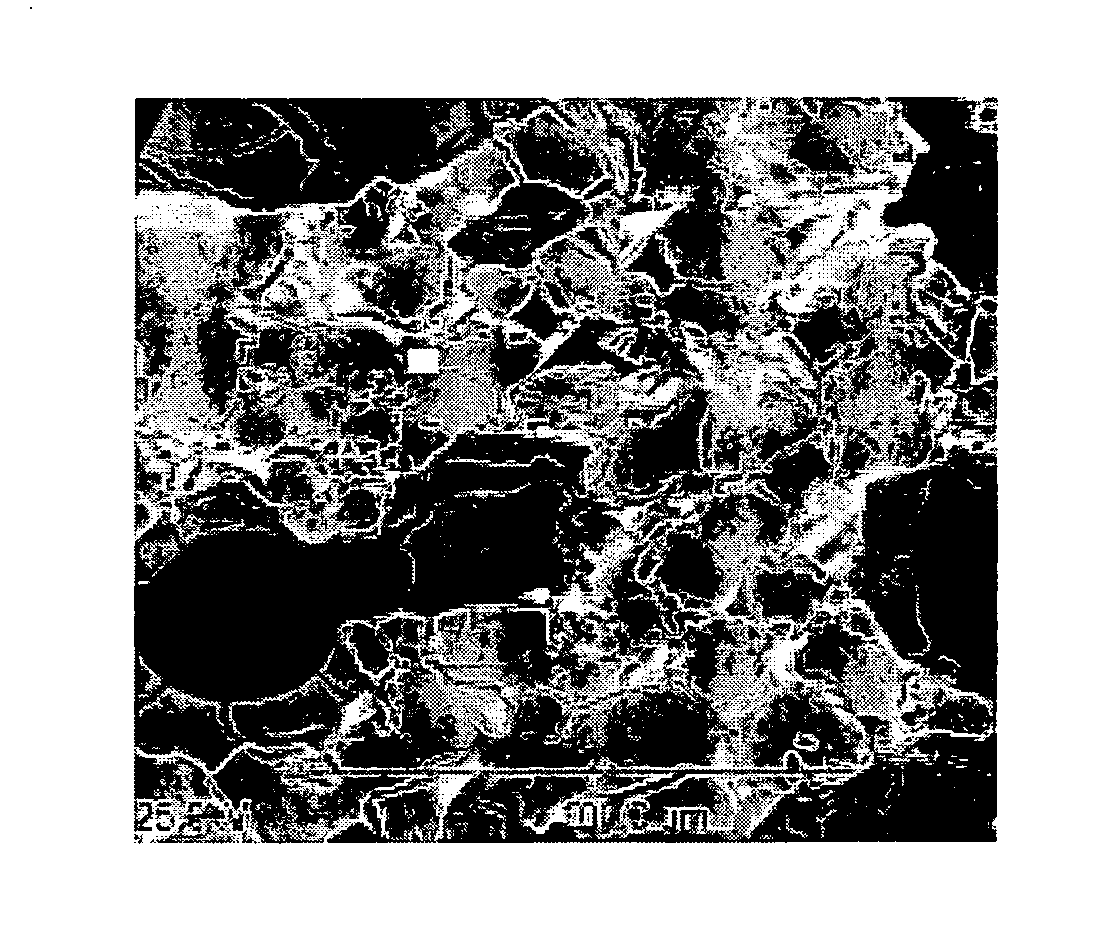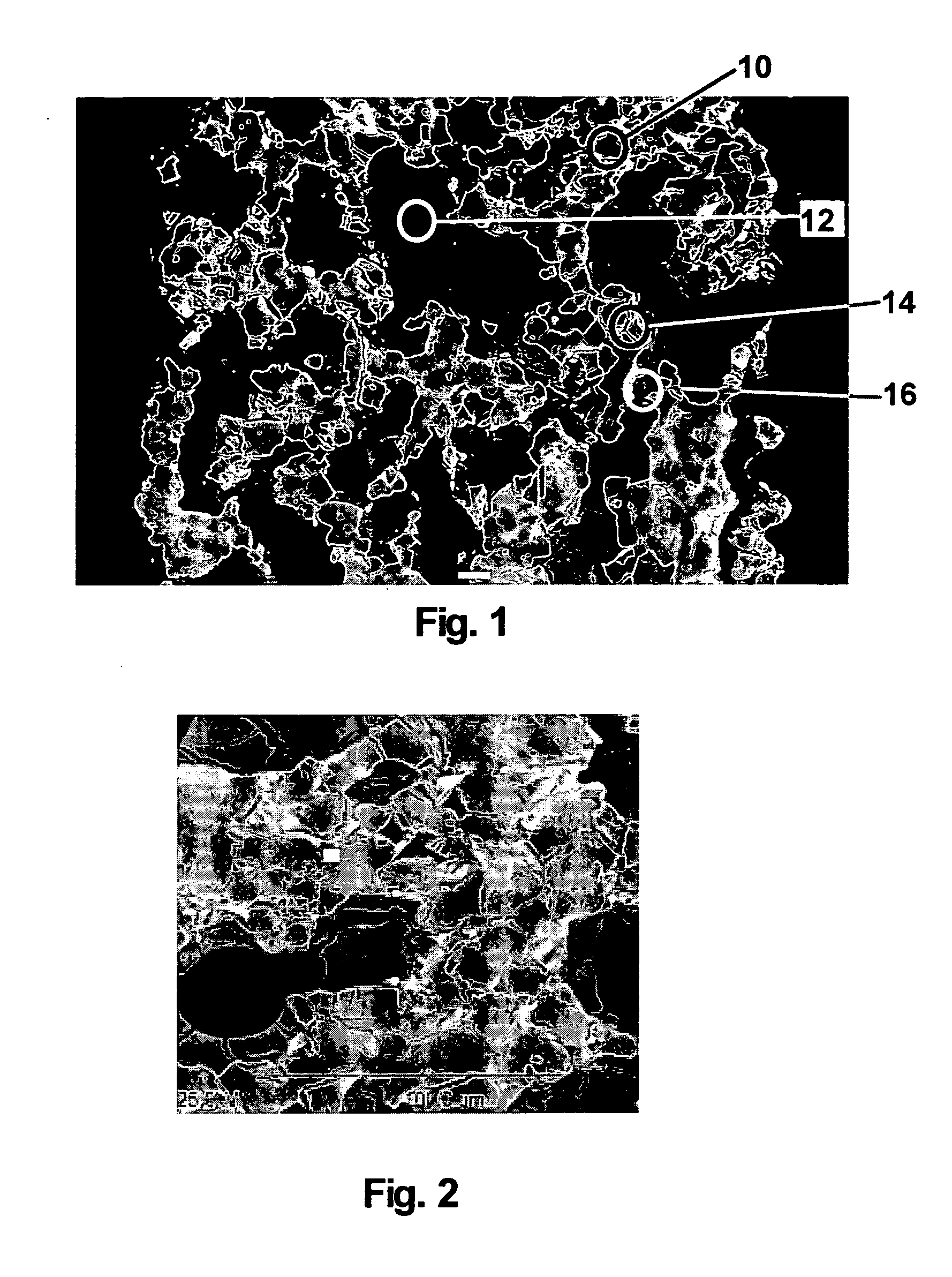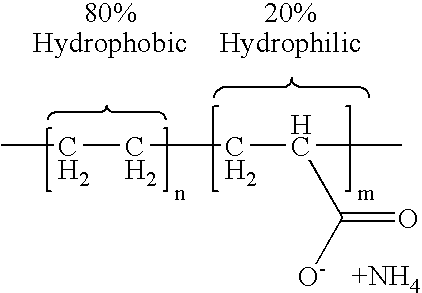Microwave process for porous ceramic filters with passivation and catalyst coatings
a technology of porous ceramic filters and catalyst coatings, applied in catalyst activation/preparation, metal/metal-oxide/metal-hydroxide catalysts, etc., can solve the problem of significant reduction of the overall dry time required, and achieve the effect of improving coating efficiency
- Summary
- Abstract
- Description
- Claims
- Application Information
AI Technical Summary
Benefits of technology
Problems solved by technology
Method used
Image
Examples
example 1
Microwave Drying of Passivation and Catalyst Washcoat Coatings
[0043] For the present experiment, a microwave oven was used for the passivation drying step as well as the catalyst washcoat drying step. CTE samples of a porous aluminum titanate ceramic measuring 1.5″×0.5″ were used for the experiments. The porosity of the aluminum titanate sample material was 47.59%, with the specific sample composition described in U.S. Patent Application Publication No. 2004 / 0092381 A1, filed Jul. 24, 2003, and entitled ALUMINUM TITANATE-BASED CERAMIC ARTICLE. The CTE of the sample at 1000° C. was 8.7×10−7 / ° C. This CTE value is reported as 8.7, as noted in Table 1, and a similar denotation is used hereinafter to report all other CTE values. Without any passivation agent, the resulting CTE was relatively high (44) after the application of the washcoat layer.
TABLE 1SAMPLE (1 × 1)% PASSIVATIONAL-20 (G / L)CTE 1000 C.Control008.7Control + AL-20078.8544Ionene (mw)2.471.6811.4Ionene (mw)3.24811.4Ionene ...
example 2
Microwave Drying of Passivation and Catalyst Washcoat Coatings
[0051] Microwave drying is further evaluated for the case of a passivation coating formed from a water based solution of a polyvinyl alcohol / polyvinyl amine (PVOH / VAM) copolymer mixed with a polycarbodiimide crosslinker, a solution that is also effective for the treatment of microcracked porous ceramic filters to preserve their low CTE on washcoating / catalyzing. Studies of thermal crosslinking for this passivation coating system typically indicate that completion of the crosslinking reaction takes >31 hours at 100° C., approximately 6½ hours at 125° C., and approximately 1½ hours at 150° C.
[0052] For the purpose of expediting crosslinking and drying to improve process throughput, studies are undertaken employing a microwave oven to affect the drying / crosslinking reaction for this passivation coating system. Three 2″×6″ porous ceramic filters composed of an aluminum titanate ceramic are weighed and then vacuum infiltrate...
PUM
| Property | Measurement | Unit |
|---|---|---|
| crack widths | aaaaa | aaaaa |
| diameters | aaaaa | aaaaa |
| particle size | aaaaa | aaaaa |
Abstract
Description
Claims
Application Information
 Login to View More
Login to View More - R&D
- Intellectual Property
- Life Sciences
- Materials
- Tech Scout
- Unparalleled Data Quality
- Higher Quality Content
- 60% Fewer Hallucinations
Browse by: Latest US Patents, China's latest patents, Technical Efficacy Thesaurus, Application Domain, Technology Topic, Popular Technical Reports.
© 2025 PatSnap. All rights reserved.Legal|Privacy policy|Modern Slavery Act Transparency Statement|Sitemap|About US| Contact US: help@patsnap.com



